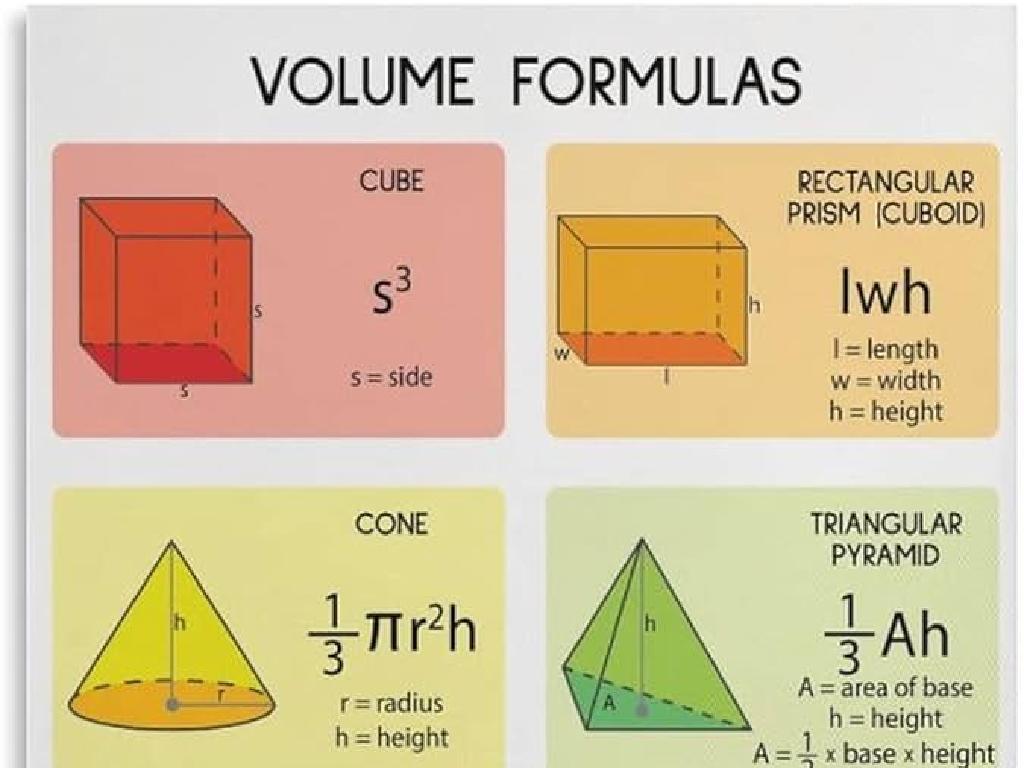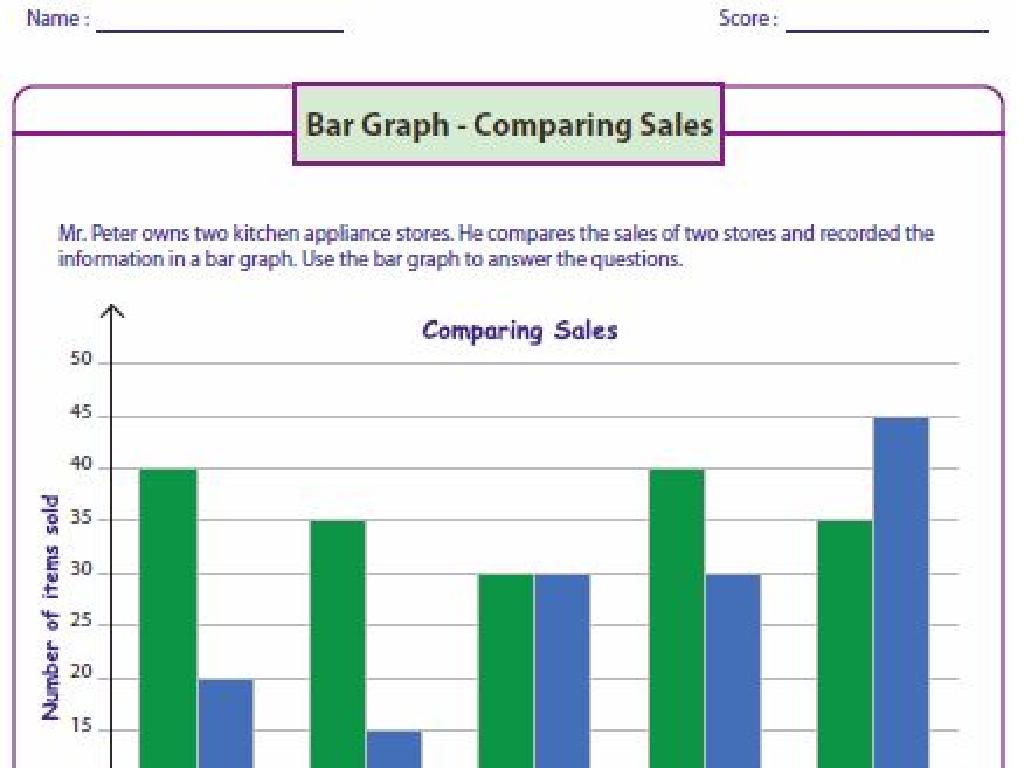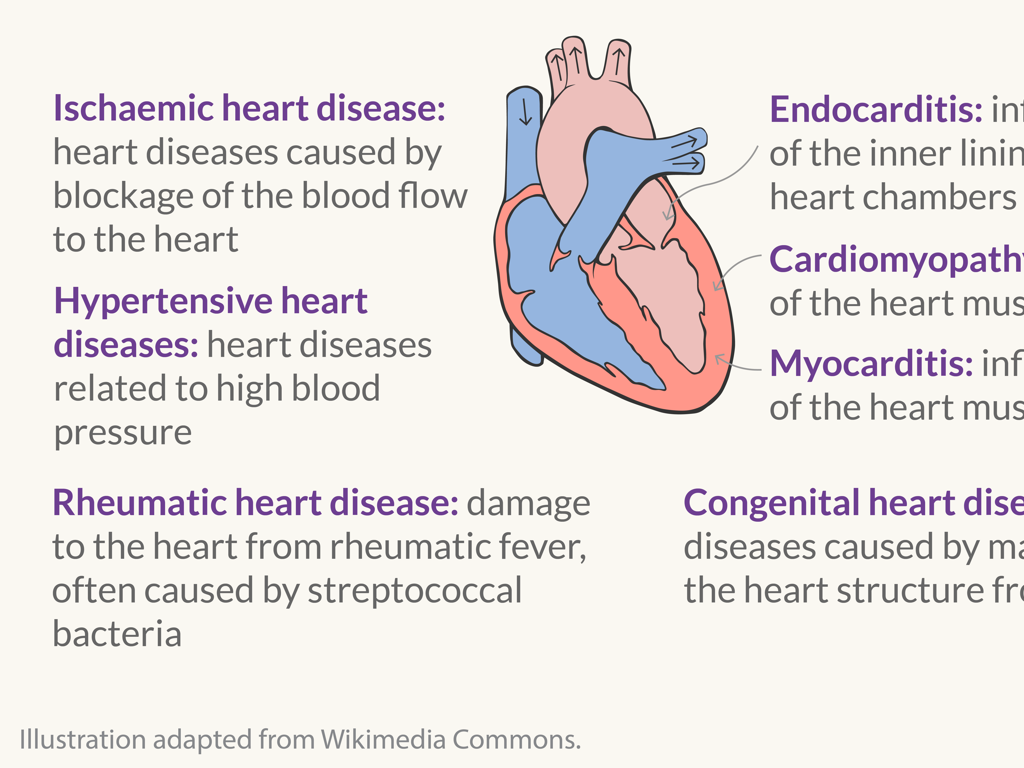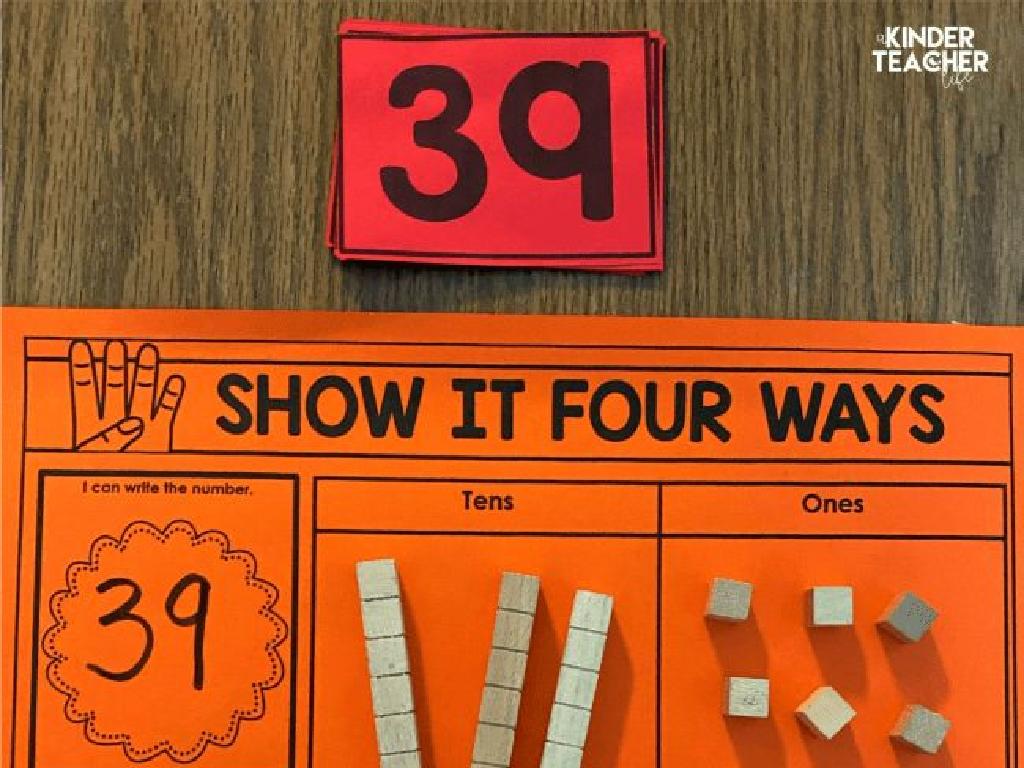Abbreviate Mass And Volume Units
Subject: Science
Grade: Second grade
Topic: Units And Measurement
Please LOG IN to download the presentation. Access is available to registered users only.
View More Content
Exploring Mass and Volume
– What is mass?
– Mass is how heavy something is.
– What is volume?
– Volume is how much space something takes up.
– Measuring in science
– Why measurement matters
– Helps us compare, cook, and build things!
|
This slide introduces the concepts of mass and volume as fundamental units of measurement in science. Begin by explaining that mass refers to the amount of matter in an object, which we often perceive as weight. Volume describes the amount of space an object occupies. Highlight the importance of measuring in science as it allows us to make accurate observations and comparisons. Emphasize why measurement is crucial, not just in science but in everyday life, such as in cooking recipes or building things to the right size. Use simple and relatable examples to help the students grasp these concepts. For instance, comparing the mass of a backpack with books to one without, or the volume of a full water bottle versus an empty one.
Understanding Mass in Science
– Mass: How much ‘stuff’ is inside
– Measure mass in grams and kilograms
– Small items in grams, big items in kilograms
– Weighing items to learn about mass
– Use scales to see mass of classroom objects
– Examples: Apple, Pencil, Textbook
– Apple (g), Pencil (g), Textbook (kg)
|
This slide introduces the concept of mass to second-grade students. Mass is a fundamental concept in science that refers to the amount of matter in an object. The slide explains that mass is measured in grams and kilograms, with grams being suitable for smaller objects and kilograms for larger ones. During the class, demonstrate how to weigh items using a scale and discuss the mass of each item in terms of grams or kilograms. Provide examples such as an apple, a pencil, and a textbook, and have the students guess which unit of measurement to use before weighing them. This interactive approach helps students grasp the concept of mass and how to measure it.
Understanding Volume in Science
– Volume: space an object occupies
– Liquid volume in liters and milliliters
– For example, a water bottle might hold 500 mL
– Solid volume in cubic centimeters
– For example, a small box might be 15 cm³
– Abbreviations: L, mL, cm³
|
This slide introduces the concept of volume to second-grade students, explaining that volume is the amount of space an object takes up. Emphasize that different units are used for measuring the volume of liquids and solids. Liters and milliliters are typically used for liquids, which can be demonstrated with everyday items like water bottles or milk jugs. Cubic centimeters are used for solids, and can be illustrated with blocks or boxes. Teach students the common abbreviations for these units and ensure they understand how to read them. Use hands-on examples if possible, and encourage students to think of other objects they could measure in liters, milliliters, or cubic centimeters.
Abbreviating Units of Mass and Volume
– Abbreviations make writing easier
– ‘g’ stands for grams
– Light things like a feather weigh grams
– ‘L’ for liters, ‘mL’ for milliliters
– We drink ‘L’ of water, ‘mL’ in small bottles
– ‘kg’ means kilograms, ‘cm³’ for volume
– ‘kg’ for heavy items, ‘cm³’ measures things like boxes
|
This slide introduces the concept of abbreviating units of mass and volume, which is a practical skill for students to learn. Abbreviations like ‘g’ for grams and ‘kg’ for kilograms help us write and read measurements quickly and efficiently. Use everyday examples to illustrate the use of each unit: a feather for grams, a water bottle for liters and milliliters, a backpack for kilograms, and a small toy box for cubic centimeters. Encourage students to practice using these abbreviations by measuring items around the classroom or at home and recording their findings.
Mass and Volume Units
– 1 kg equals a bag of apples
– ‘kg’ stands for kilogram, a unit for mass
– 500 mL is like a water bottle
– ‘mL’ means milliliter, a volume unit for liquids
– 200 cm³ for a wood block
– ‘cm³’ means cubic centimeters, for solid volume
|
This slide introduces students to the concept of measuring mass and volume with real-world examples. Explain that ‘kg’ is short for kilogram and it’s how we measure how heavy something is, like a bag of apples. ‘mL’ stands for milliliter, which is used to measure how much liquid is in something, like a bottle of water. ‘cm³’ means cubic centimeters, a unit to measure the space a solid object takes up, like a block of wood. Encourage students to think of other items they could measure in kilograms, milliliters, or cubic centimeters and to bring examples to class.
Let’s Practice Measuring!
– Measuring item mass in class
– We’ll use a scale to find how heavy things are!
– Measuring water volume
– We’ll fill containers and see how much they hold!
– Recording measurements
– Using correct units
– Units like grams (g) for mass, liters (L) for volume
|
This slide is for a hands-on activity where students will learn to measure and record the mass and volume of various objects. Provide a variety of classroom items for mass measurement and different sized containers for volume measurement. Teach students how to read scales and measuring cups. Emphasize the importance of writing the correct units next to their measurements. For mass, use grams (g) and for volume, use milliliters (mL) or liters (L). This activity will help students understand the practical application of measurement in science. Prepare to assist students who may struggle with reading scales and reinforce the lesson with examples and repetition.
Class Activity: Exploring Mass and Volume
– Visit measuring stations
– Measure item mass in grams, kilograms
– Use scales for mass: g for grams, kg for kilograms
– Measure water volume in liters, milliliters
– Use cups for volume: L for liters, mL for milliliters
– Record and abbreviate units
|
This activity is designed to give students hands-on experience with measuring mass and volume, and understanding the standard units of measurement. Set up different stations with scales and measuring cups. Provide various common items for students to weigh, ensuring some are light enough to be measured in grams and others heavy enough for kilograms. Similarly, have containers of water to be measured in liters and milliliters. Teach students how to read scales and measuring cups, and guide them to correctly write down their measurements using the abbreviations for each unit. This will help them become familiar with the concept of mass and volume and how to record data like scientists. Possible variations of the activity could include measuring different substances or comparing the mass of the same volume of different materials.
Reviewing Mass and Volume
– Recap mass and volume units
– Share your measurement findings
– Tell us about the items you measured at home
– Discuss the importance of mass and volume
– Why do we need to know how heavy or big something is?
– Understanding everyday use
– How we use mass and volume in daily life, like cooking or mailing packages
|
This slide aims to consolidate the students’ understanding of mass and volume by reviewing the units of measurement they’ve learned. Encourage the children to share the measurements they’ve taken, perhaps of items at home, and discuss their findings. Emphasize the practicality of knowing mass and volume in everyday situations, such as following a recipe or determining postage for a package. This will help them appreciate the relevance of these concepts in their daily lives. Prepare to facilitate a discussion where students can express their thoughts on why mass and volume are essential measurements.
Measurement Masters: Abbreviating Units
– Congratulations on learning about mass & volume!
– Now you can abbreviate units like a scientist
– Scientists write ‘g’ for grams and ‘l’ for liters
– Practice makes perfect in measurement
– The more you practice, the better you’ll get
– You’re on your way to becoming an expert!
|
This slide is a celebratory conclusion to the lesson on mass and volume. It’s meant to reinforce the students’ understanding of abbreviating units and to encourage them to continue practicing these skills. Emphasize the importance of using the correct abbreviations for grams (g), kilograms (kg), milliliters (ml), and liters (l), as these are commonly used in scientific measurements. Remind them that learning these abbreviations is part of becoming a measurement expert, which is an important skill in science. Encourage them to practice by measuring items at home and writing down their measurements with the correct abbreviations.






